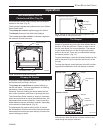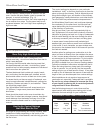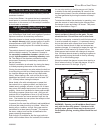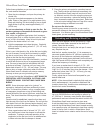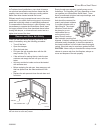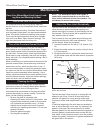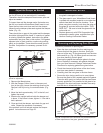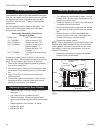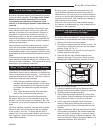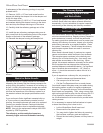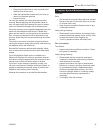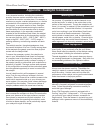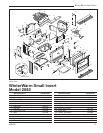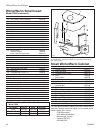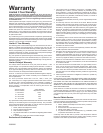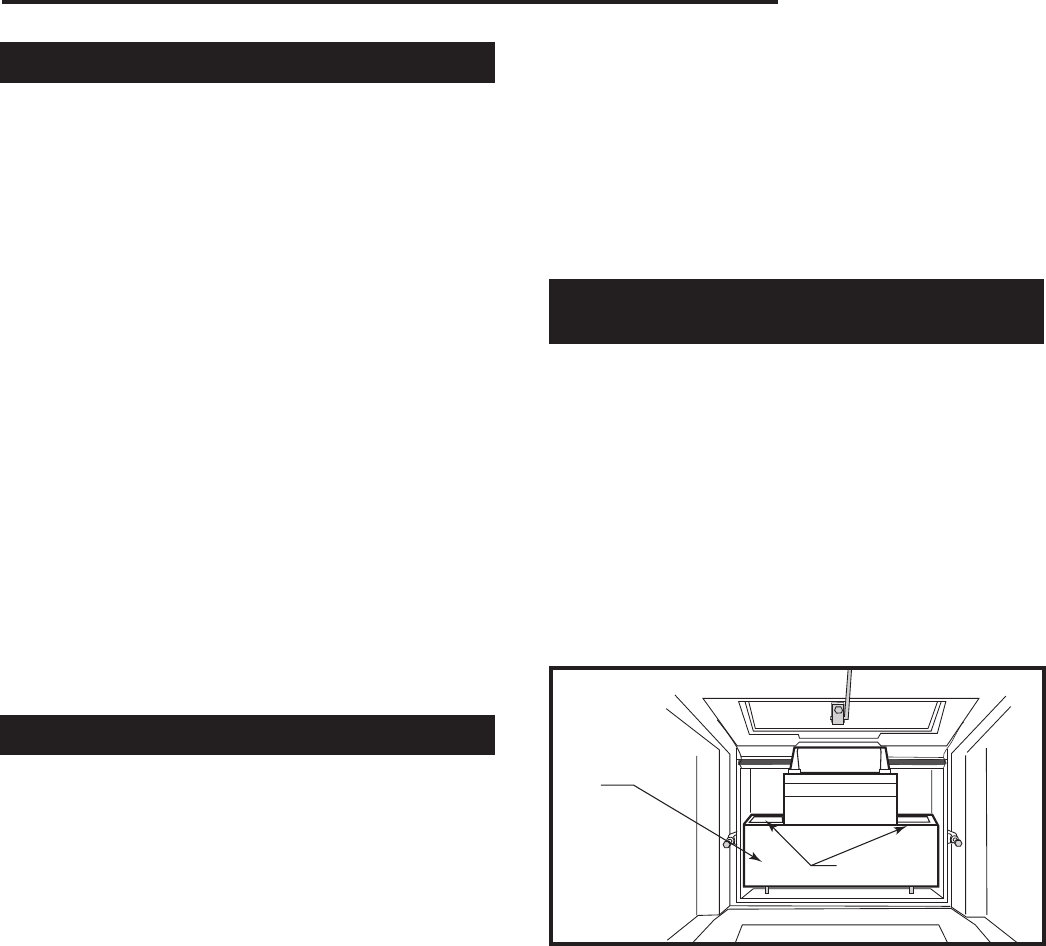
17
WinterWarm Small Insert
2000888
Care of the Catalytic Combustor
Your wood heater contains a catalytic combustor which
should be inspected regularly and replaced periodically
to ensure proper operation. It is illegal in the United
States to operate this wood heater in a manner
inconsistent with operating instructions in this
manual, or if the catalytic element is deactivated or
removed.
Under normal operating conditions, the catalytic com-
bustor should remain active for two to six years (de-
pending on the amount of wood burned). However, it
is important to monitor the combustor to ensure it is
functioning properly, as well as to determine when it
needs to be replaced. A non-functioning combustor will
result in a loss of heating efficiency, and an increase in
creosote and emissions.
The combustor should be visually inspected “in place”
for fly ash accumulation and physical damage three
times per year. Actual removal of the combustor is not
recommended unless a more detailed inspection is war-
ranted because of diminished performance as outlined
below.
The refractory package that houses the catalytic com-
bustor should be inspected annually for a build-up of fly
ash and cleaned if necessary. This may be done during
examination of the catalytic combustor.
When To Suspect a Combustor Problem
The best way to evaluate the performance of your
WinterWarm Small Insert’s combustor is to observe the
amount of smoke leaving the chimney — both when the
combustor has achieved “light-off” and when it has not.
Follow this simple two-step procedure:
• With a fire going and the combustor properly
activated with the damper closed to route smoke
through it as described in the Operation Section,
go outside and observe the smoke leaving the
chimney.
• Then, open the stove damper and once again
observe the smoke leaving the chimney.
Significantly more smoke should be observed after
the second step when the stove damper is open and
exhaust is not routed through the combustor. Be care-
ful, however, not to confuse smoke with steam from wet
wood.
If this test indicates a problem, consider other possible
factors as well, such as the time of year or a change
in the quality of your fuel. In spring and fall, draft is
weaker than it is in colder winter weather, and fires can
burn sluggishly. Small, hot fires are a good solution
under these conditions.
Burning “green” (insufficiently seasoned) wood will
result in poorer performance than burning properly
seasoned fuel. You may have to run your stove hotter
(more air) to achieve good performance if you are burn-
ing green or wet wood. Also, consider any changes in
your operating routine as well.
Once you have ruled out any other possible causes
for a decline in performance, you may proceed with an
inspection of the combustor.
Removal and Inspection of the Combustor
and Refractory Package
Before you begin, observe the basic safety precautions
for working with dusty materials: always wear protec-
tive eyewear, a recommended dust mask, and gloves.
1. Remove the andirons and burn plates.
2. Two cast iron wedges hold the fireback in place. Us
-
ing a block of wood and a hammer, tap the wedges
upward. (Page 16, Fig. 17)
3. Grasp the fireback by its vertical ribs and remove it,
together with the throat hood.
4. Clean the left and right exhaust pockets of the
refractory package. Use a shop vacuum to avoid
damaging the fragile refractory material. (Fig. 18)
5. Inspect the gaskets that seal the fireback to the
damper frame and stove back. Replace if necessary.
6. Carefully remove the refractory plug.
7. Gently slide the catalytic element out of the refrac
-
tory chamber. Check the element and the bottom of
the refractory chamber for a build-up of fly ash.
8. If the honeycomb is clogged, take it outside for
cleaning. Blow gently through the honeycomb. A
sizeable quantity of ash may be removed from the
element.
9. Inspect the element. Although small hairline cracks
will not affect performance, the element essentially
should be intact. If the element is broken in pieces
or has sections missing, it should be replaced. Call
your local Vermont Castings Authorized Dealer for a
replacement element, item #160-2521.
FP1107
WWsi
refractory package
4/01
Exhaust
Pockets
Refractory
Plug
FP1107
Fig. 18 The refractory package.



